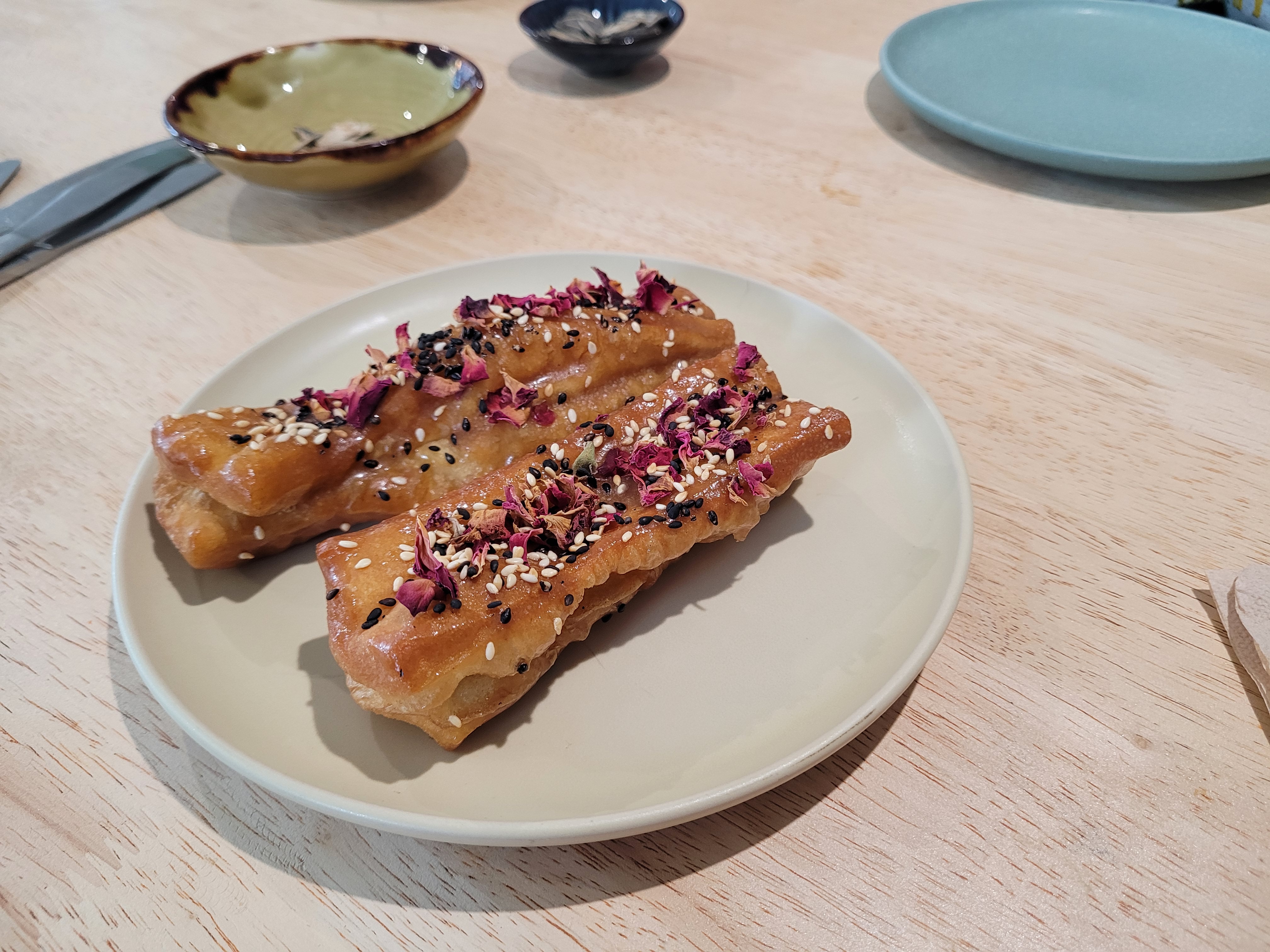
Saturday, December 31, 2022
Lemon, tomato & cardamom dhal

Sunday, December 18, 2022
Chang-ed up wombok slaw with plum sauce

Monday, December 12, 2022
Sautéed corn with chillies, radishes & pine nuts
November 27, 2022

Alongside the jalapeño poppers, I whipped up a serve of pretty basic nachos using this old BBQ beans recipe and Cindy suggested this simple corn side, from another cookbook she's been scanning through: Joshua McFadden and Martha Holmberg's Six Seasons. This is barely even worth a recipe: it's corn kernels fried in butter and then jazzed up with a few trimmings, but it's an excellent accompaniment to a Mexican-themed feast and has a very high reward to effort ratio.
Saturday, December 10, 2022
Jalapeño poppers
November 27, 2022

Cindy's been working her way through recipes she bookmarked from In Praise of Veg and, when a surprise delivery of fancy vegan cream cheese arrived at our house, she knew it was time to bust out these poppers. The original recipe takes regular dairy cream cheese and fancies it up with smoked paprika, garlic powder and coriander, but we just used the pickled red onion and dill Damona cream cheese. We lazily used real cheddar on top for guaranteed meltiness.
With the cream cheese substitution it's a very simple recipe, that really comes down to your dexterity in stuffing the little jalapeños - I managed the stuffing reasonably well, but then half of them tipped over in the oven and needed a bit of emergency re-stuffing. The final result was great: our jalapeños still packed a bit of a punch, and the Damona and cheddar only partly smoothed it over, so it's a spicy treat, but definitely a treat.
Wednesday, December 07, 2022
One For The Crow



Wednesday, November 30, 2022
Roasted butternut pumpkin with sage & macadamias

Sunday, November 27, 2022
Haloumi with roasted rhubarb & tomatoes

Thursday, November 24, 2022
Coconut sago sundaes

- The kitchen mess. I knew this recipe would take time, but it also took heaps of dishes and a bunch of straining, leaving two distinct piles of slimey lemongrass to clean up.
- It's more time sensitive than I expected. This looks like something you could make hours before serving, and indeed I made a couple parts a day early. But this caused the sago to swell up and the coconut cream to harden - the texture really wasn't what Zaslavsky intended. My garnishing lime zest lost its... zest. On the other hand, you do need to get started 2-3 hours before you intend to serve it.
- Eggs. Three yolks and a whole egg? Weird. I don't love separating eggs, and I don't love dealing with the leftovers. (Though I will admit that this choc-date-almond meringue is a good solution for 3 egg whites, and I used it.)
- I couldn't taste the lemongrass, even though I used more than twice the recommended amount.
Monday, November 21, 2022
Fennel cacciatore with polenta dumplings

Thursday, November 17, 2022
Nico's


Tuesday, November 08, 2022
Silverbeet khachapuri

Sunday, November 06, 2022
White bean soup with pesto dumplings

Sunday, October 23, 2022
Kale Mary







Sunday, September 18, 2022
Stir-fried cauliflower with fermented bean curd

Thursday, September 08, 2022
Peanut butter & cardamom thumbprint cookies

Sunday, September 04, 2022
Vegan potato gratin with miso cashew cream


Monday, August 29, 2022
Small Graces


Wednesday, August 24, 2022
Confit chickpeas


Thursday, August 18, 2022
Creamy vegan pasta with smoky tempeh

Thursday, August 11, 2022
Rice Paper Scissors II






Thursday, August 04, 2022
Quince & browned butter tart


